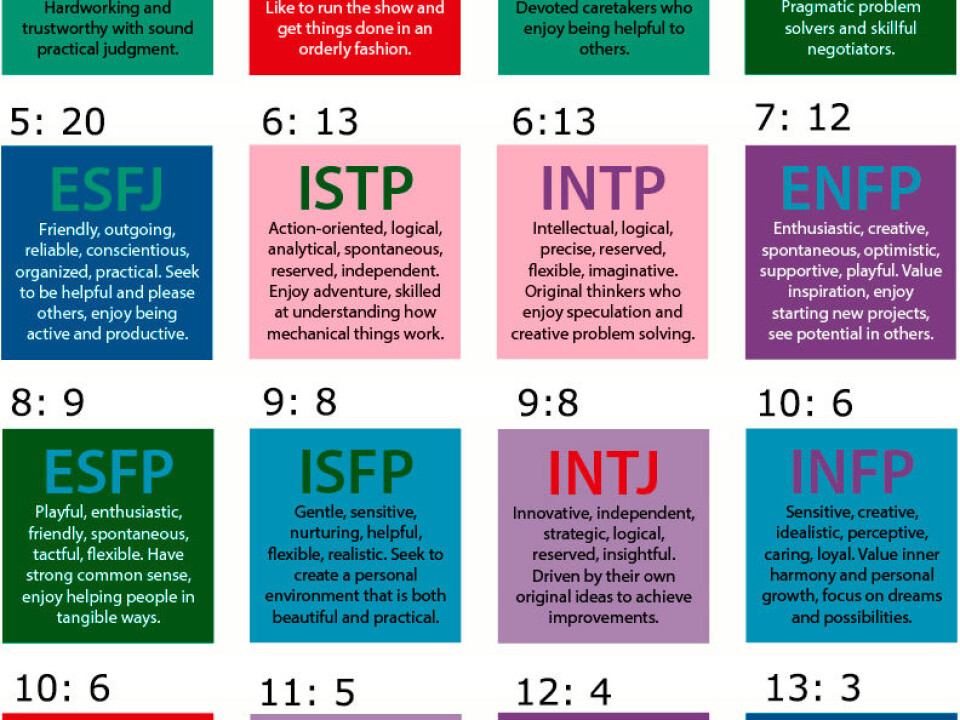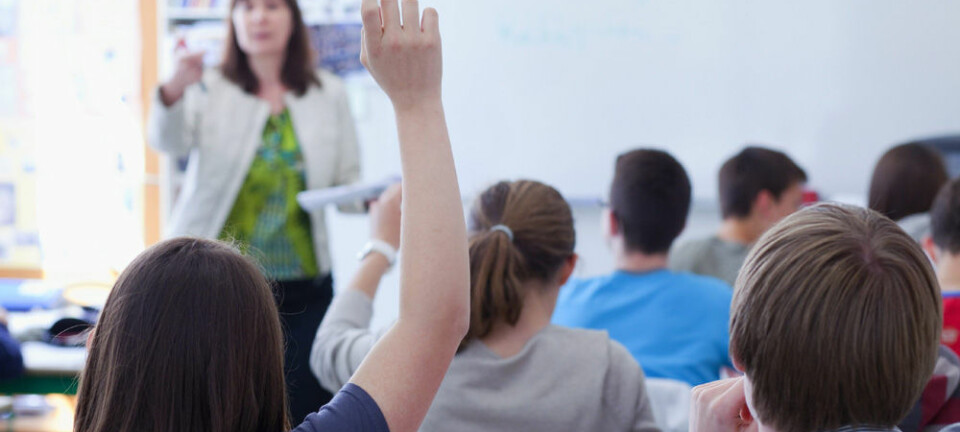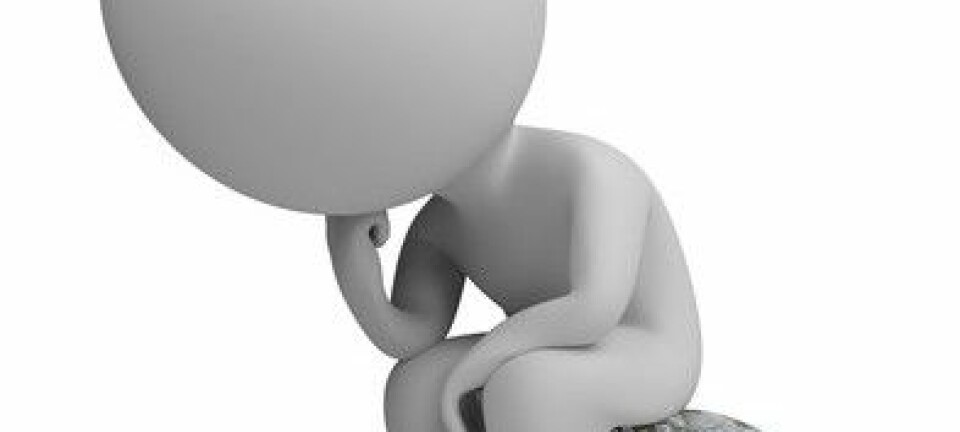
Creative crisis in the university lecture hall
Passive teaching techniques scare creative thinkers from the classroom, a Norwegian study suggests.
If you think of the traditional, “old style” kind of university education, you’re likely conjure up an image of large lecture halls filled with students bowed over their notebooks, scribbling feverishly while a learned professor expounds on his subject matter.
Today’s universities have tried to move away from that kind of passive teaching by taking advantage of 21st century technology in the form of Massive Open Online Courses (MOOCs), for example, where the lecture is online and supported by interactive user forums.
But a new analysis by researchers from the Norwegian University of Life Sciences (NMBU) in Ås suggests that neither of these approaches is likely to nurture the kind of free-thinkers and innovators, like Albert Einstein, Steve Jobs or Bill Gates, who have the potential to make significant contributions to society.
Instead, the researchers say, universities—especially Norwegian universities, where the traditional lecture hall approach is still the dominant form of teaching—need to turn this way of teaching on its head. Only then will universities attract and feed the kind of intellects that characterize people like Jobs, Gates and Einstein.
Not for creative, out-of-the box thinkers
Personality types and work habits

The researchers were able to recruit 288 students from NMBU who volunteered to answer an electronic questionnaire to classify their personality type, along with their work habits and preferences. The researchers used a combination of two different personality classifications, called the Myers-Briggs personality test and the Big Five, to analyse and describe the personalities of their study subjects.
They were also able to obtain grades for the students from nine different undergraduate subjects. The researchers reported a clear connection between grades and different personality characteristics.
“This should by no means be interpreted as differences in skills, but rather as an indication of biased teaching style and pedagogical structure in the university,” the researchers wrote in their study, published in a Norwegian pedagogical journal called Uniped.
“The results across all the nine subjects show that the traditional teaching structure in universities with lectures in large auditoriums with limited dialogue, a rigid and structured curriculum, textbook reading and paper-and-pencil tests, clearly disfavors students ... (who) are altruistic, creative and out-of-the box thinkers.”
Instead, the researchers found, the Norwegian universities’ lecture-heavy courses tended to favour people who are similar to Queen Elizabeth II and Harry Truman, both of whom are classified as conscientious, responsible and rule-governed.
People like Jobs and Einstein, in contrast, are called inventors—extroverted, intuitive, logical thinkers, inventive and improvisational, and not particularly married to established rules. This personality type would not do well in a traditional Norwegian university, according to the researchers.
Inventors with bad grades
If the survey is to be believed, one of the most serious findings was not that there were very few Norwegian students in the NMBU study who had the same personality traits as Jobs and Einstein.
Instead, it was that the grades for those who were classified as more creative and inventive were typically lower than those of the more conscientious students in subjects such as mathematics, economics, chemistry, management and organizational psychology and philosophy.
All of these subjects include some element of mathematics.
“All nine subjects we examined clearly favour those who build their knowledge incrementally, with steady, disciplined work,” said Helge Brovold.
Brovold is a psychologist and senior adviser at the Norwegian Centre for Science Recruitment. He was one of the authors of the Uniped article, which he wrote with Professor Solve Sæbø and Trygve Almøy, both statisticians at NMBU.
Creative spirits drop out
In short, the researchers say, universities seem to be best for those who like to follow in the footsteps of others. Those who are willing to think in new ways or differently may drop out.
“We're often losing them in the initial phase of their studies,” Brovold said.
While the study published in Uniped just looked at undergraduates, the researchers said that if the more creative students survived their initial courses, things can be much better for them in the end.
“One bit of good news is that we often find these initially low-performing students overrepresented when prizes are handed out,” Sæbø wrote in an email. “Then they are praised for their originality, entrepreneurship and ability to find alternative ways to solve a complex problem.”
Flipping the classroom
There’s no question that Einstein, Jobs and other great thinkers were intelligent. So how do we help their kindred spirits thrive in today’s universities?
The researchers suggest one way to engage these students is to turn the approach to teaching on its head, in something called a flipped classroom.
Inventive students need to see the whole before they become engaged with the parts. Only then can they make sense of the parts and put them in context.
In effect, this means teaching things backwards, starting with setting a goal, and then letting the students find their way, which stimulates their curiosity and their creativity.
Brovold says one example of this is President Kennedy’s famous man on-the-moon speech, in which he challenged the United States to put a man on the moon by the end of the 1960s.
“In doing so, he jump-started a collective sense of wonder, and encouraged people to search for a technical solution. This is backwards,” Brovold said.
Cooperation and independent working
With a flipped classroom, a student’s time at university is spent less on lectures, and more in discussions with teachers and fellow students, as well as in group project work, or for the more introverted, alone and independently.
An emphasis on conversations and a de-emphasis on lectures will also reduce math anxieties for many, especially females, the researchers said.
“When we take the angst out of the mathematics, we often see that math skills and math joy suddenly appear,” Saebø wrote.
-------------------------------------
Read the Norwegian version of this article at forskning.no
Scientific links
- Solve Sæbø, Trygve Almøy og Helge Brovold: Does academia disfavor contextual and extraverted students? Uniped, årg. 38, nr. 4-2015, s.274-283, ISSN online: 1893-8981.
- Abstract: Robert R. McCrae og Paul T. Costa Jr.: Reinterpreting the Myers-Briggs Type Indicator From the Perspective of the Five-Factor Model of Personality, Journal of Personality, Vol. 57, Issue 1, pp 17-40, mars 1989
- Abstract: John W Lounsbury m.fl: Intelligence, “Big Five” personality traits, and work drive as predictors of course grade, Personality and Individual Differences, Volume 35, Issue 6, October 2003
- David Keirsey: Rational Architect Portrait of Albert Einstein - Article from Keirseys website


































